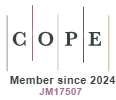Factors affecting outcomes of patients with intestinal obstruction operatively managed at Alotau Provincial Hospital: a hospital-based cross-sectional study
Isaiah Borchem A , Ian Umo A * and Kennedy James AA
Abstract
Intestinal obstruction (IO) is the complete or partial blockage of the passage of intestinal contents. In Papua New Guinea, little is known about outcomes of IO. The aim of this study was to describe the operative outcomes of patients with IO and identify the factors associated with unfavourable outcomes at Alotau Provincial Hospital (APH).
A hospital-based cross-sectional study of patients diagnosed clinically with IO at APH was conducted from 1 January 2020 to 31 December 2022. Potential factors associated with having an unfavourable outcome were assessed using univariate logistic regression to determine the odds ratios (ORs). A P-value <0.05 was considered significant.
A total of 95 persons were admitted between 1 January 2020 and 31 December 2022 with IO requiring surgery. The median age was 34.8 years, and 65.2% (n = 62) of persons were males (65.2%). Adhesions were the most common cause of IO in this study, accounting for 27.4% (n = 26) of cases. There were significant odds of increased unfavourable outcome in persons with vomiting (OR 9.75, 95% CI 2.38–66.7, P = 0.001), abdominal distension (OR 2.30, 95% CI 1.14–8.52, P = 0.01), dehydration (OR 6.89, 95% CI 2.43–22.53, P = 0.0001), tachycardia (OR 3.80, 95% CI 1.39–11.45, P = 0.004), fever (OR 4.19, 95% CI 1.78–10.20, P = 0.0001), tachypnoea (OR 3.94, 95% CI 1.09–18.61, P = 0.01), hypotension (OR 1.85, 95% CI 1.21–2.85, P = 0.03), signs of IO on erect abdominal radiograph (OR 2.56, 95% CI 1.09–6.21, P = 0.01), leucocytosis (OR 4.19, 95% CI 1.78–10.2, P = < 0.0001), granulocytosis (OR 3.2, 95% CI 1.38–7.61, P = 0.003), and intensive care unit (ICU) admission (OR 6.3, 95% CI 1.98–24.01, P = 0.0001).
Intestinal obstruction remains a major surgical burden at APH, with adhesions being the most common cause. Clinical indicators such as vomiting, abdominal distension, dehydration, systemic inflammatory response, and ICU admission were significantly associated with unfavourable outcomes. These findings emphasise the importance of early recognition, timely referral, and surgical intervention, as well as the need to strengthen perioperative and critical care services in resource-limited settings such as Papua New Guinea.
Keywords: Alotau Provincial Hospital, bowel obstruction, intestinal obstruction, Milne Bay Province, mortality, outcomes, Papua New Guinea, risk factors.
References
1 Atalay M, Gebremickael A, Demissie S, Derso Y. Magnitude, pattern and management outcome of intestinal obstruction among non-traumatic acute abdomen surgical admissions in Arba Minch General Hospital, Southern Ethiopia. BMC Surg 2021; 21: 293.
| Crossref | Google Scholar | PubMed |
2 World Health Organization.. Global, regional, and national incidence, prevalence, and years lived with disability for 310 diseases and injuries, 1990–2015: a systematic analysis for the Global Burden of Disease Study 2015. Lancet 2015; 388(10053): 1545-602.
| Crossref | Google Scholar | PubMed |
3 Lim Sheng Hao J, Toh BC. Seasonal unusual cause of small bowel obstruction in South East Asia. ANZ J Surg 2021; 91(6): E428-9.
| Crossref | Google Scholar |
5 Boniface K. 40 - Bowel obstructions. In: Adams, JG editor. Emergency Medicine, Clinical Essentials, 2nd edn. 2013. 10.1016/B978-1-4377-3548-2.00040-9
6 James K, Borchem I, Talo R, Aihi S, Baru H, Didilemu F, Moore EM, McLeod E, Watters DA. Universal access to safe, affordable, timely surgical and anaesthetic care in Papua New Guinea: the six global health indicators. ANZ J Surg 2020; 90(10): 1903-9.
| Crossref | Google Scholar | PubMed |
7 Umo I, James K. The direct medical cost of acute appendicitis surgery in a resource-limited setting of Papua New Guinea. World J Surg 2021; 45: 3558-64.
| Crossref | Google Scholar | PubMed |
8 Nakanwagi AM, Kijjambu SC, Ongom P, Luggya TS. Outcomes of management of intestinal obstruction at an urban tertiary hospital in sub–Saharan Africa: a cross-sectional study. BMC Surg 2021; 21: 408.
| Crossref | Google Scholar | PubMed |
9 National Statistical Office. PNG Population Census 2011 Report. 2014. Available at https://actnowpng.org/sites/ [cited December 2023].
10 Girma H, Negesso M, Tadese J, Hussen R, Aweke Z. Management outcome and its associated factors among surgically treated intestinal obstruction cases in Dilla University Referral Hospital, Southern Ethiopia: a cross-sectional study. Int J Surg Open 2021; 33: 100351ṅ.
| Crossref | Google Scholar |
11 Peacock O, Bassett MG, Kuryba A, Walker K, Davies E, Anderson I, Vohra RS. Thirty-day mortality in patients undergoing laparotomy for small bowel obstruction. Br J Surg 2018; 105(8): 1006-13.
| Crossref | Google Scholar | PubMed |
12 Paul CJJ, Dohmen J, van Beekum CJ, Willis MA, Braun L, Kalff JC, Willms AG, Vilz TO. Surgical treatment of mechanical bowel obstruction: characteristics and outcomes of geriatric patients compared to a younger cohort. Int J Colorectal Dis 2022; 37(6): 1281-8 PMCID: PMC9167188.
| Crossref | Google Scholar | PubMed |
13 Yilma Y. Management outcome of small intestinal obstruction in Mizan Aman General Hospital, Ethiopia. J Clin Exp Pathol 2018; 8: 359.
| Google Scholar |
14 Bankole AO, Osinowo AO, Adesanya AA. Predictive factors of management outcome in adult patients with mechanical intestinal obstruction. Niger Postgrad Med J 2017; 24: 217-23.
| Crossref | Google Scholar | PubMed |
15 Geng W, Fuller M, Osborne B, Thoirs K. The value of the erect abdominal radiograph for the diagnosis of mechanical bowel obstruction and paralytic ileus in adults presenting with acute abdominal pain. J Med Radiat Sci 2018; 65(4): 259-66.
| Crossref | Google Scholar | PubMed |
16 Saunders DI, Murray D, Pichel AC, Varley S, Peden CJ, On behalf of the members of the UK Emergency Laparotomy Network.. Variations in mortality after emergency laparotomy: the first report of the UK Emergency Laparotomy Network. Br J Anaesth 2012; 109(3): 368-75.
| Crossref | Google Scholar | PubMed |


